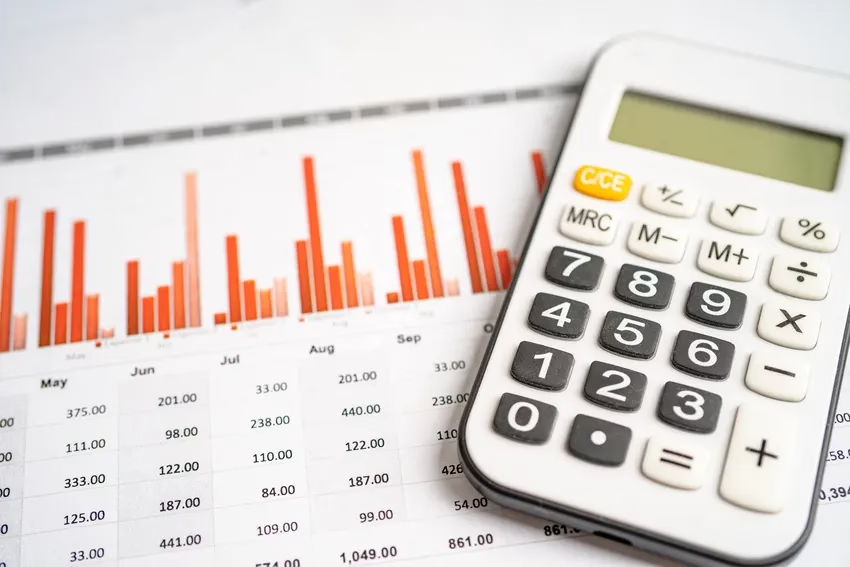Understanding NAV Calculation: A Comprehensive Guide

Key Highlights
- Gain a thorough understanding of net asset value (NAV) and its pivotal role in evaluating mutual funds.
- Dive into the fundamental components of NAV calculation, including total assets and total liabilities.
- Discover how market conditions influence NAV and impact investment strategies in the UAE.
- Master the NAV calculation formula and learn how to sidestep common errors.
- Obtain actionable investment knowledge through a step-by-step guide and practical FAQs concerning NAV.
- Explore how NAV links to a fund’s performance, aiding better decision-making for investors.
Now, let’s elaborate on the concept of NAV, starting with the basics.
Introduction
When you are investing in mutual funds, it is important to know about net asset value, or NAV. NAV is the value of the fund’s assets after their debts are paid. It is figured out at the end of each trading day. NAV shows the value for one unit in the fund and lets investors see how their money is doing over time. This tool is there to help you see what the fund offers and to compare your choices. The net asset value, found at the end of each trading day, helps you make better choices when it comes to investing in these funds. NAV has a key place in the world of investing. It helps bridge the gap between what the market is doing and the smart steps you take with your money.
What is Net Asset Value (NAV)?

Net asset value, or NAV, means the total value of a fund’s assets after you take away what it owes. You find this number for each share. This is an important number for people who invest, because it tells you the price to buy or sell a share on that basis.
Key Components of NAV Calculation
Breaking down how NAV is figured out, there are a few main things to know:
- Total Assets: This is the full value of what a fund owns. It includes things like stocks, cash, and other receivables in the fund’s holdings.
- Total Liabilities: This covers the bills that need to be paid, like management and operational fees, and any other costs that are still owed.
- Number of Shares: This is the total amount of fund units that all people own. It’s important because you need this number to find the NAV per unit.
The way these parts work together makes up the heart of NAV. Here’s how it goes: let’s say a fund’s total assets add up to $150 million. If the total liabilities are $20 million and there are 3 million total shares, here’s how you work out the NAV for each unit:
“NAV = ($150M – $20M) ÷ 3M = $43.33 for each share.”
Getting the total assets, total liabilities, and number of shares right is very important. It helps people look at the value of the fund in the right way so they can make good decisions.
Importance of NAV in the UAE Investment Landscape
In the UAE, the net asset value, or NAV, is very important for investing, especially when you put your money in a mutual fund. When you know about NAV, you can see what your money is really worth in a fund. This is true even as market conditions change.
In the UAE, funds work out NAV every day. It shows the financial health of the fund. NAV helps people like you line up your investment goals and see if your plans for growth match what is happening now. It also lets you keep an eye on trends in investing, so you feel more sure of your choices, even when market conditions go up and down.
The UAE market is not simple. Many things, like the country’s own economy, global news, different ways of managing a fund, and how people feel about the market, can change the NAV. For anyone putting money in a mutual fund, NAV is like a helpful tool. It can point out a good path for both people who are new to investing and those who have done it for years. That way, everyone can make better money moves in this fast-changing world of investing.
The NAV Calculation Formula Explained

The NAV calculation formula helps you see what each mutual fund unit is worth. You can find it by using this formula:
NAV = (Total Value of Assets – Total Liabilities) ÷ Total Number of Units
This simple formula shows you the real value of a mutual fund after all the fund’s liabilities are paid. For example, you can check how much one unit is worth if a fund has a total value of assets and total liabilities shared across 5 million units. This makes it easy for people to know the true price of each unit. NAV is important because it tells us how much each share in the mutual fund is really worth.
Step-by-Step Guide to Calculating NAV
Calculating net asset value (NAV) can be easy if you follow a few steps. Here is what you need to do:
- Determine Total Assets: Add up all the holdings in the portfolio. This includes any securities, cash, and any income earned that has not been received yet.
- Subtract Total Liabilities: Take away all costs, like management fees, other expenses, and payments that need to be made.
- Divide by Total Number of Units: Take the leftover value and divide it by the number of units in the fund to get the NAV per unit.
Here’s an example shown in a table:
| Component | Value (in $) |
| Total Assets | 5,000,000 |
| Total Liabilities | 500,000 |
| Net Assets | 4,500,000 |
| Number of Units | 100,000 |
| NAV Per Unit | 45.00 |
This step-by-step way helps you look at NAV easily. It also makes it clear when you want to check or compare a fund’s value.
Common Mistakes in NAV Calculation and How to Avoid Them
Even small mistakes in NAV calculation can cause people to get the wrong idea. Be careful with these common issues:
- Ignoring Fluctuations: Market price changes each day, and this can change the NAV in ways you may not expect. Always include real-time updates.
- Improper Fund Categorization: Not checking if you have a mutual fund or ETF can cause problems. Sort funds by their characteristics.
- Neglecting Outstanding Units: If you use the wrong number of units, your results can turn out wrong. Double-check your record to be sure.
- Misjudging Market Price vs NAV: Some people think the market price is always the same as the NAV, but it isn’t because market supply and demand are not the same each time.
To keep away from these mistakes, use tools you trust and look over your calculations more than once before you finish.
Conclusion
In the end, knowing how net asset value (NAV) works is key if you want to make smart investment choices in the UAE. As you can see, the NAV is more than just a figure. It shows how well a fund is doing and gives you a very important tool as an investor. When you understand what goes into NAV and the mistakes people often make when working it out, you can move through the world of investing with more confidence and work to get the most out of your money.
It helps a lot to keep an eye on how net asset value changes as the market moves up and down. This way, you will be ready to make better choices with your money. If you want to learn more about nav and how it can affect your investments, it’s a good idea to talk with a pro or use trusted sources to boost your money skills.
Frequently Asked Questions
Is a higher NAV always better for mutual fund investments?
A higher NAV does not always mean better returns. The total value of what you have in a fund, the market price, and how the fund works are more important. You should look at how the fund is doing, the risk, and if it fits with your investing goals. Do not just look at the NAV. Focus on all these things when you make a choice.
How often is NAV calculated for UAE-based funds?
In the UAE, the NAV for mutual funds is worked out at the end of each trading day. This lets people see the holdings of the portfolio at that moment. By doing this, there is transparency, and you can look at what you own in the fund each day. Some mutual funds may share their NAV every week or every month. This all depends on how the fund is set up.
What factors can influence changes in NAV?
Things like changes in market prices, dividends, and moves in total assets or liabilities can have a big effect on NAV. Also, market conditions that change and any updates to the fund’s plan can make NAV go up or down over time.
How does NAV differ between mutual funds and ETFs?
While the NAV for mutual funds shows what the fund is worth at the end of each trading day, the market price of an ETF is set by how many people want to buy or sell it during the day. This is the main reason that makes ETFs different from mutual funds that use the NAV as a basis for their value.
Can investors directly affect the NAV of a fund?
No, one investor on their own cannot change the NAV. The NAV comes from things like prices in the market, what the fund holds, and the money or debts it has. But, if fund managers decide to change the holdings in the fund, then that can make the NAV go up or down over time.
What does NAV stand for, and why is it important in finance?
Net asset value (NAV) is very important in finance. It shows the value of a fund’s share. To work out NAV, you take the company’s total assets and remove its debts. Many people use NAV when they want to compare mutual funds or see how well they are doing. This way, you get a good idea of the value of a fund by checking its net asset value.
How is the Net Asset Value (NAV) of a mutual fund calculated?
To find the net asset value (NAV) of a mutual fund, you take the total assets and subtract the total liabilities. After that, you divide what you get by the number of outstanding shares. This way, you get the NAV, which shows people what each share of the fund is worth at that moment. This helps investors know the per-share value quickly and easily.
What factors can influence the NAV of an investment fund?
Market conditions, dividends, changes in holdings, and asset-liability changes can change the NAV of an investment fund. It is important to keep a close watch so that people know what things can affect the value.
How often is NAV reported, and when should investors pay attention to it?
NAV is given at the end of each trading day. It helps people see what is going on with the market price. If you put your money in, you should look at NAV now and then. This lets you make choices that match what you want. By doing this, you can keep an eye on the number of units you have and see how your investment is working.


